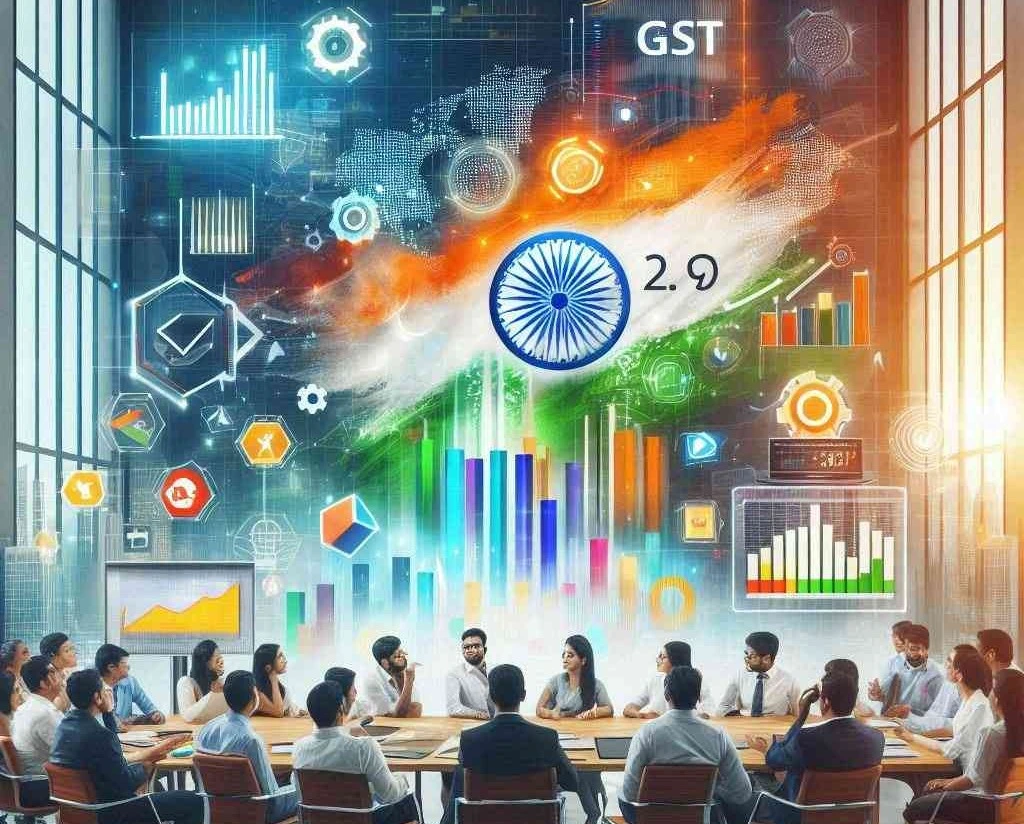New GST regime, GST 2.0, which makes daily essentials and healthcare products cheaper and luxury costlier
With the festive season just on the brim, a landmark tax overhaul affectionately named as “GST 2.0” has been officially announced and is slated to take effect from September 22, 2025, the first day of the auspicious Navratri. This comes after the 56th GST Council meeting, chaired by Finance Minister Nirmala Sitharaman, delivered a sweeping rationalisation of GST slabs that promises simpler taxation, lower prices for essentials and targeted levies on luxury goods.
A streamlined GST 2.0 tax structure: say bye bye to too many slabs
Gone are the days of a four tier GST system. The new framework GST 2.0 consolidates most of the structure under just two main slabs 5% and 18%, while introducing a new 40% “sin and super-luxury” slab
- 5% slab: Targets daily-use essentials, FMCG, and critical healthcare goods.
- 18% slab: Applies to most other goods including automobiles, appliances and housing inputs.
- 40% slab: Reserved for luxury and sin items such as high-end vehicles, pan masala, cigarettes, aerated drinks, yachts and personal aircraft
What goods/services will consumers get cheaper
This GST 2.0 reform brings considerable relief, especially for households and small businesses:

- Daily essentials: Items like hair oil, soaps, shampoos, toothbrushes, tableware, and kitchenware will now be taxed at just 5%, down from 12–18% whichever applicable.
- Staples & packaged foods: Goods like UHT package milk, paneer, Indian breads (roti, paratha), namkeen, sauces, cornflakes, butter and ghee are now either GST exempt or fall under the 5% slab.
- Healthcare: 33 life‑saving medicines are fully exempt, and glasses or goggles for vision correction have seen their GST slashed from 28% to 5% .
- Housing & construction: GST on cement has been reduced from 28% to 18%, helping lower building costs and helping infrastructure development.
- Durables & autos: Air conditioners, TVs (regardless of screen size), small cars (<1200 cc petrol, <1500 cc diesel), motorcycles ≤350 cc, three-wheelers, buses, trucks, ambulances and auto parts are now at 18% GST (down from 28%)
- Labour-intensive sectors: Handicrafts, marble, granite, leather goods, man-made fibre and yarn have been unified at 5% to correct inverted duty
- Agriculture & renewables: Solar cookers, renewable energy devices, tractors, tractor parts, fertilisers all largely moved to the 5% category
- Insurance: Significantly, all individual life and health insurance policies are now completely exempt from GST, offering relief across policyholders
What Becomes Costlier
The new 40% slab of GST 2.0 targets luxury and sin goods:
- Luxury & sin items: This includes paan masala, cigarettes, gutka, bidis, carbonated beverages with added sugar, caffeinated and fruit‑based drinks, mid to high capacity vehicles, yachts, helicopters, private aircraft and bikes over 350 cc.
- Tobacco products (pan masala, cigarettes, chewing tobacco, zarda, bidis) will continue under existing GST and compensation cess rates until related loans are cleared; full 40% GST applies thereafter
- Valuation move: GST on such tobacco items will shift from transaction value to Retail Sale Price (RSP), likely increasing tax compliance and revenue.
Fiscal Impact and Rationale
This sweeping overhaul is estimated to cost the central and state exchequers around ₹48,000 crore (approx. US $5.5 billion) a strategic move to spur consumption and counter global economic headwinds including U.S. tariffs. GST 2.0: Council approves two-slab structure, set for implementation by Sept 22 – The Tribune
Dubbed GST 2.0, the reform is expected to:
- Simplify compliance and classification.
- Resolve inverted duty structures.
- Boost consumption across FMCG, healthcare, agriculture and domestic manufacturing sectors.
- Lay the groundwork for long-term economic growth and consumer affordability.
Final Thoughts
India’s GST 2.0 set to roll out from September 22, 2025 signals a bold move toward tax simplification and fiscal stimulus via targeted relief. By trimming rates on essentials and healthcare while tightening taxation on luxury and sin goods, the reform balances support for the middle class with continued revenue mobilization. The timing just ahead of Navratri and Diwali makes it a truly festive tax reform, promising both economic and social uplift.

1 thought on “GST 2.0 effective from September 22: Tax simplified right at the festive threshold”